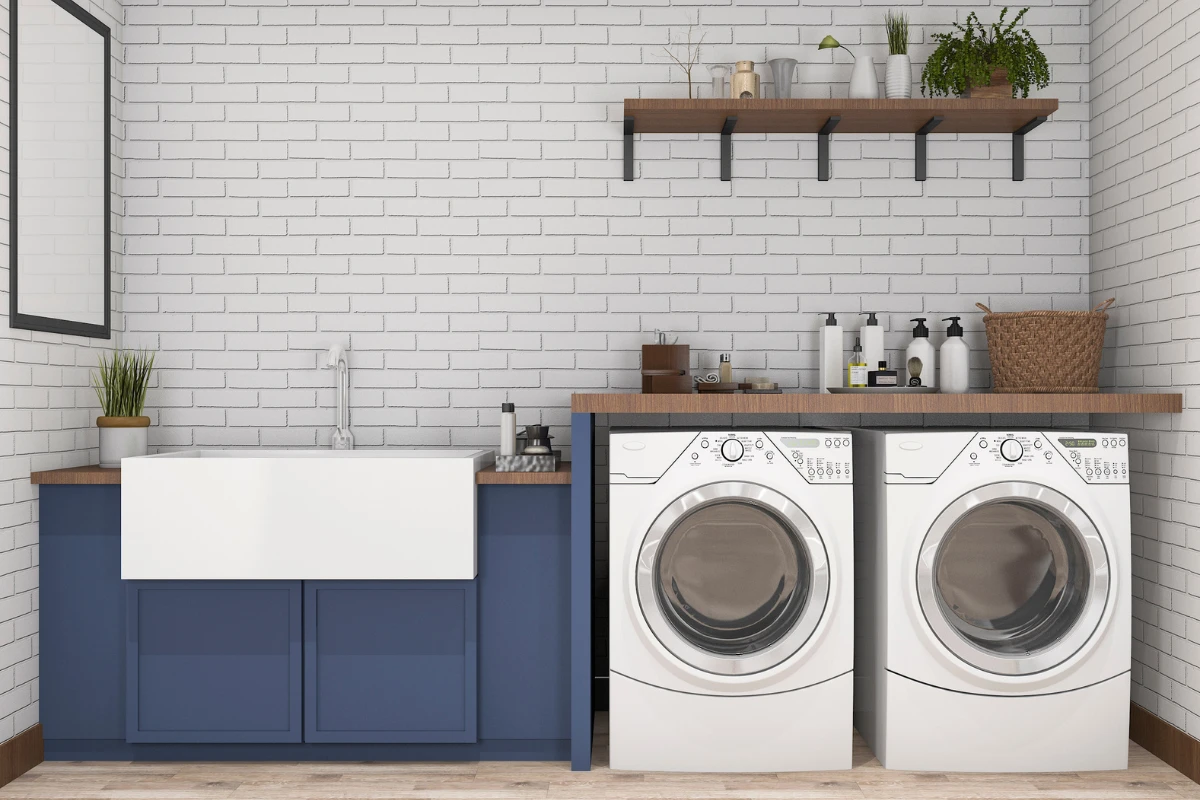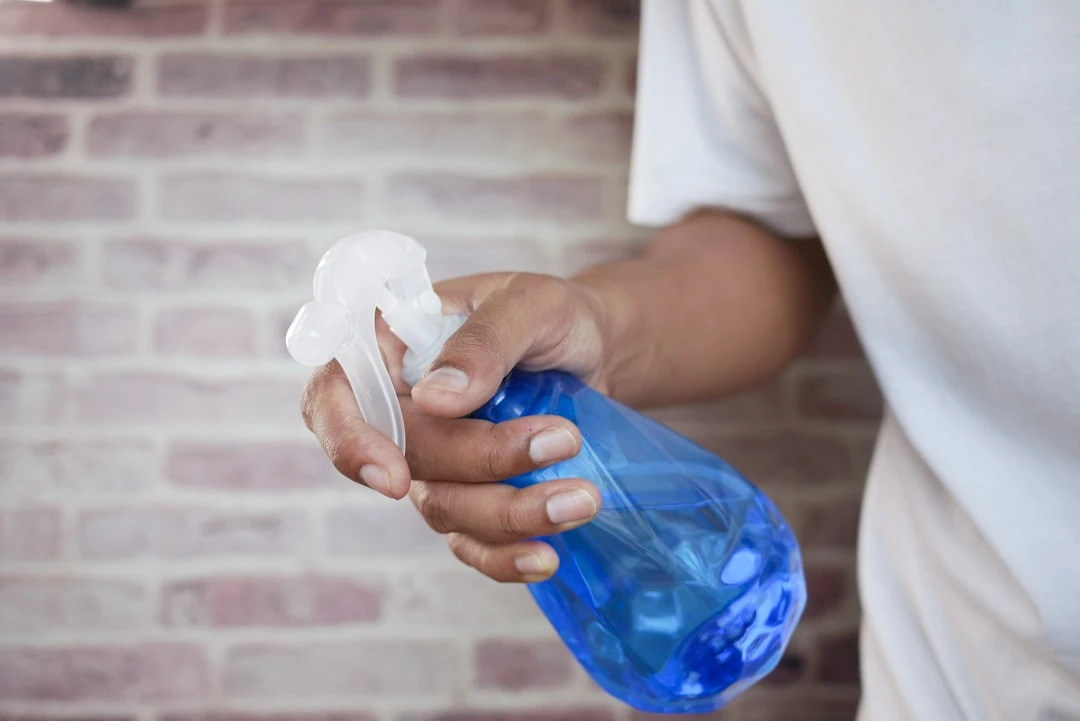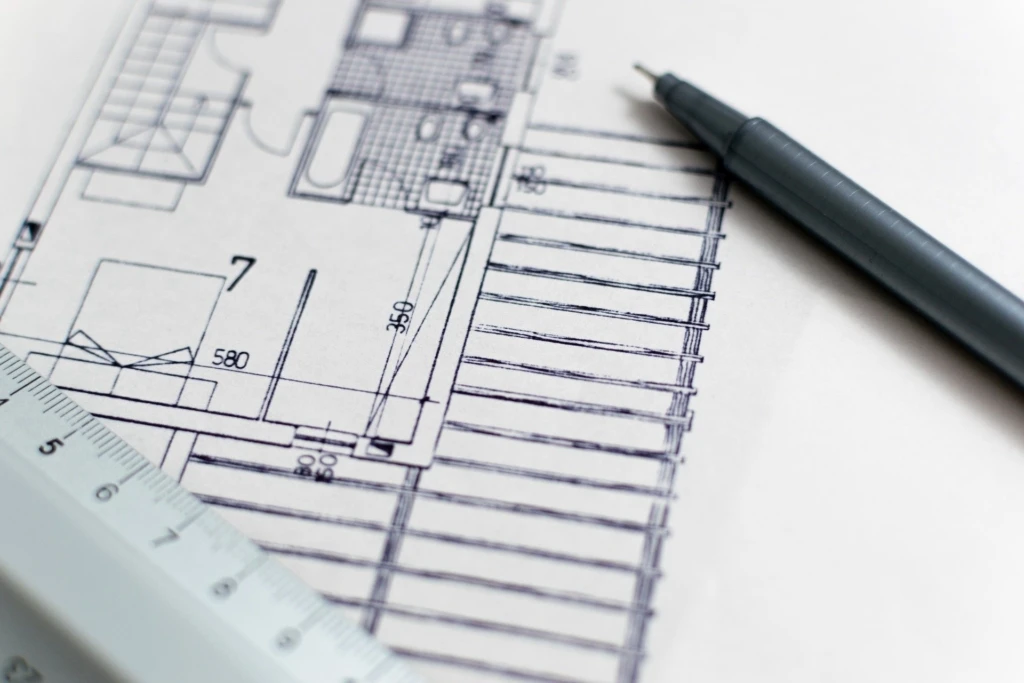Washing Machine Cleaning: Ensure Your Machine's Long Lifespan and Reliability

Have you noticed that your laundry room is no longer as clean as it used to be? Unpleasant odors, a dirty door, or perhaps grime in the drum? These are signs that your washing machine needs a thorough cleaning. Regular maintenance not only ensures better washing results, but also significantly extends the life of your household helper. Let's take a closer look at how to properly clean and maintain your washing machine.
Why is washing machine cleaning important?
We use our washing machines regularly, but clean them rarely. Yet the device accumulates over time:
Limescale, which reduces the efficiency of the heating element and increases energy consumption
Detergent residue, which clogs the system and reduces washing efficiency
Dirt and bacteria, which cause unpleasant odors and can even affect the smell of clothes
Moisture, which promotes mold growth and can cause health problems
Regular maintenance helps save energy, reduce repair costs, and ensure that clothes always come out clean. Statistics show that a properly maintained washing machine can last up to 5 years longer than an unmaintained one, meaning significant financial savings.
Regular maintenance after each use
Here are simple steps you can take after each wash:
Leave the door ajar - When the washing machine is not in use, leave the door slightly open so moisture can escape and prevent mold growth. This small change in your daily routine can significantly extend the life of the seals.
Wipe the seal - Use a damp cloth to clean the door seal to remove accumulated dirt and debris. Seals are often the first places where mold appears, as they remain moist and collect dirt.
Empty the detergent drawer - Remove the drawer and rinse it with warm water to remove detergent and fabric softener residue. Over time, these residues can dry out and clog the system.
These simple habits help prevent more serious problems in the future, such as mold growth in the bathroom, which is much more difficult and time-consuming to deal with. You can find more tips on preventing mold in the bathroom from our mold prevention guide.
Monthly thorough cleaning
At least once a month, it's worth doing a more thorough cleaning to ensure optimal machine operation and longevity:
1. Clean the washing machine filter
The filter collects hair, coins, and other small items that can interfere with the machine's operation or even damage the pump.
Find the filter - it's usually located at the bottom front of the machine, behind a small hatch
Place a towel or shallow bowl on the floor to collect water (there can be surprisingly much water!)
Turn the filter counterclockwise and carefully remove it
Clean the filter of dirt and foreign objects - you'll often find coins, hair clips, and even jewelry
Check the filter seal and also clean the filter housing
Reinstall the filter and turn it tightly clockwise
Many people don't clean the filter regularly because they don't know it exists or where it's located. However, a clogged filter can be one of the main reasons why a washing machine starts leaking or makes noise.
2. Clean the drum and internal parts
There are several ways to clean the inside of the washing machine:
Option 1: Use a special cleaning product
Buy a washing machine cleaning product (available in most supermarkets)
Follow the instructions on the package
Usually you need to place the product directly in the drum and run a high-temperature program
Special cleaning products are designed specifically for washing machines and effectively fight both limescale and mold.
Option 2: Vinegar cleaning
Pour 500 ml of white vinegar directly into an empty washing machine drum
Run a high-temperature (60-90°C) program
Let the machine complete a full wash cycle
Vinegar is a natural limescale remover and disinfectant that helps neutralize unpleasant odors.
Option 3: Baking soda and vinegar combination
Add 2 tablespoons of baking soda directly into the drum
Pour 30 ml of vinegar into the detergent drawer
Run a high-temperature program
The combination of baking soda and vinegar creates a fizzing effect that helps mechanically remove accumulated dirt. This method is particularly effective against strong odors and stains.

Cleaning the washing machine with baking soda and vinegar is one of the most popular home methods because these products are inexpensive and environmentally friendly. You can find more detailed instructions for cleaning your washing machine and dishwasher in our comprehensive guide to household appliance maintenance.
3. Don't forget the door seal
The door seal requires special attention as it accumulates moisture and dirt, and is often the first place where mold appears:
Mix solution: 1 part vinegar and 1 part water
Soak a cloth in the solution and thoroughly wipe the seal
Use an old toothbrush or cotton swab to reach all folds and corners
Pay special attention to the bottom part of the seal, where the most water and dirt accumulate
Dry the seal with a clean cloth
If you notice black spots on the seal edges, it may already be mold. In this case, use a solution containing a chlorine-based cleaning product, but be sure to rinse it thoroughly afterward to avoid damaging the rubber seal.
Common problems and their solutions
Unpleasant odor from the washing machine
If there's an unpleasant smell coming from your washing machine, it's usually a sign of bacterial and mold growth. This is not only unpleasant but can also transfer to your laundry.
Solution:
Clean the washing machine using the methods described above
Choose a higher temperature for washing (at least 60°C) - lower temperatures don't kill bacteria
Regularly (once a month) run a high-temperature empty machine wash cycle
Leave the washing machine door and detergent drawer open after use
Check that the drain hose behind the machine is installed correctly to prevent water backflow
Interesting fact: in moist conditions, bacteria can double every 20 minutes, which is why it's important to keep the washing machine as dry as possible when not in use.
Laundry doesn't come clean
If you notice that clothes no longer come out as clean as before, the problem could be in several places:
Possible causes and solutions:
Clogged filter - clean the filter regularly
Too much detergent - reduce the amount of detergent, it may not rinse out properly
Wrong wash program - choose a program suitable for the level of soiling
Overloading - don't put too much laundry in the machine at once, there should be enough space in the drum for clothes to move freely
Limescale on heating element - limescale reduces the efficiency of water heating, run a regular vinegar cleaning cycle
Sometimes the problem can also be water quality. Very hard water causes more limescale buildup. In this case, consider using water softening products.
Washing machine leaks
Leaking is a serious problem that requires prompt action, as it can cause water damage to your home and affect residents on lower floors.
Possible causes and solutions:
Worn door seal - check and replace the seal if necessary
Loose hose connections - check and tighten connections at the water tap and behind the machine
Clogged drain hose - clean the hose or remove the blockage
Damaged filter - make sure the filter is screwed in properly and in good condition
Cracks in the drum or machine body - these require professional intervention
If you can't stop the leak on your own, consult a specialist. Water damage can affect your home's value, especially if you plan to sell your apartment in the future. You can find more information about Tallinn apartment market from our blog.
When to call a professional?
While you can do many maintenance and cleaning tasks yourself, there are situations where it's worth calling a specialist:
The machine makes unusual noises, especially loud clicking or squeaking
Electronic components don't work properly (for example, the display shows an error code)
The machine won't start or won't complete the cycle
Leaking continues after you've attempted to solve the problem
The machine vibrates unusually strongly, even if it's level
The washing machine power cord is damaged or melted
Ordering professional maintenance once a year can significantly extend the machine's life and prevent costly repairs in the future.
How to choose a washing machine that requires less maintenance?
If you're planning to buy a new washing machine, consider the following aspects to help you choose a machine that requires less maintenance:
Self-cleaning function - some newer models have a special self-cleaning program that regularly flushes the system and prevents dirt buildup
Open drum design - helps prevent unpleasant odors by allowing better air circulation
Stainless steel drum - more durable and easier to clean than plastic or enameled versions
Energy class - energy-efficient models often use less water, which reduces limescale buildup
Steam and higher temperature functions - help remove bacteria and mold more effectively
Removable detergent drawer - allows for more thorough cleaning
Also carefully read user experiences and reviews, where maintenance requirements and common problems are often mentioned. A more expensive model might prove more economical in the long run due to lower maintenance costs and longer lifespan.
If you're renovating or buying a new home, also pay attention to planning a suitable space for the washing machine. A well-ventilated room with adequate drainage extends the machine's lifespan.
Seasonal maintenance
In addition to monthly cleaning, it's worth doing more thorough maintenance once a year, which also includes checking the machine's mechanical parts:
Check hoses - make sure the hoses have no cracks or leaks, and replace them if you see signs of wear
Clean water filters - remove and clean incoming water filters that protect the machine from dirt and debris
Check machine level - make sure the machine is level, this reduces vibration and extends lifespan
Check electrical connections - inspect the power cord and plug for signs of damage
Preventive limescale treatment - use a special limescale remover, especially if you live in an area with hard water
Spring cleaning is an ideal time to do these maintenance tasks. Think of it as an investment in your home's infrastructure – properly maintained household appliances are part of a well-functioning and valuable home.
Like the washing machine, other household appliances also require regular maintenance. For example, before the grilling season begins, it's worth properly cleaning and maintaining your outdoor grill - see how here.
Summary
Regular cleaning and maintenance of your washing machine is not just a matter of hygiene - it significantly extends the device's lifespan, saves energy, and ensures that your clothes get truly clean. If you follow these simple tips, you can save hundreds of euros on repair and replacement costs, and your washing machine will serve you reliably for years to come.
Do you have questions about home maintenance or real estate? Kinnisvara24 offers a wide range of advice and services to help you find answers to your home-related questions. Visit our website and explore factory houses, apartments, and other real estate offerings!




